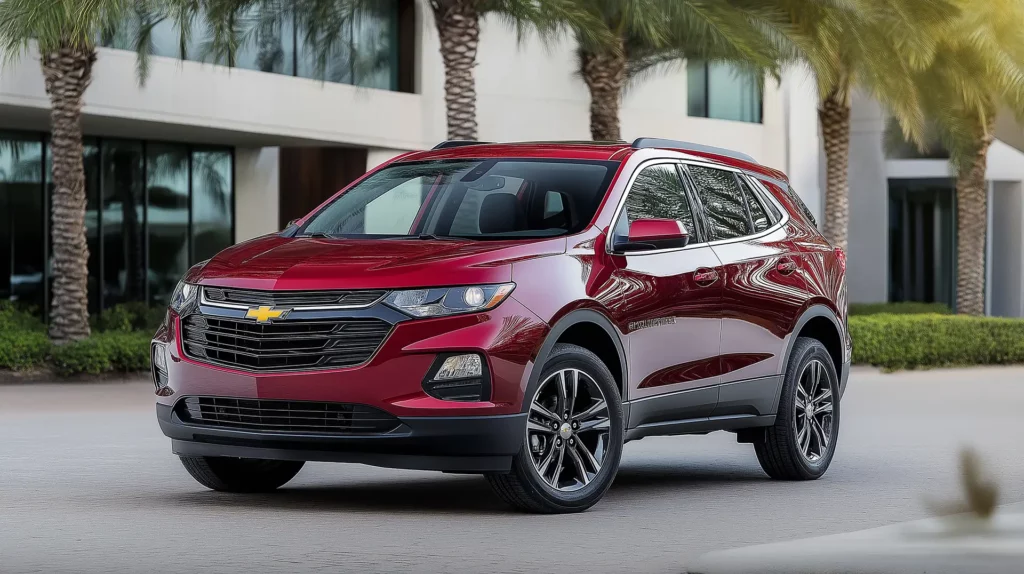Car insurance premium factors can feel confusing, but they don’t have to be. Insurers look at things like your age, driving history, and even your car’s make and model. Your location and the type of coverage you choose also play a part. Understanding what goes into your premium can help you make better decisions and maybe even save money. Let’s break it all down so you know what to expect.
Personal Factors
Your personal traits play a big role in determining how much you pay for car insurance. These car insurance premium factors include your age, gender, marital status, occupation, and even your credit score. Let’s look at each one to see how it affects your rates.
Age and Gender
- Age: Younger drivers, especially those under 25, often pay the highest premiums. They’re considered high-risk because they’re more likely to get into accidents. For instance, teens aged 16-19 are three times more likely to be involved in a fatal crash compared to drivers 20 and older.
- Gender: Men are statistically more likely to take risks while driving. Because of this, male drivers often pay higher premiums than women, particularly younger men. However, this difference usually evens out as drivers age.
Marital Status
Are you married? Great news! Married people tend to be seen as more responsible, including behind the wheel. Studies show that married drivers have fewer accidents and claims. Because of this, they often get lower rates compared to single, divorced, or widowed drivers.
Occupation
What you do for a living can impact your insurance costs. For example, jobs that involve a lot of driving, such as being a delivery driver, might raise your premiums since you’re on the road more often. On the flip side, if you have a desk job or work from home, you could benefit from lower rates. Insurers also sometimes consider the overall “riskiness” of your job when deciding the cost.
Credit Score
Your credit score isn’t only for loans and credit cards—many insurance companies use it to determine premiums, too. Why? Studies show that drivers with lower credit scores file more claims, so they’re considered higher risk. Improving your credit score can lead to lower rates. For example, someone with poor credit might pay almost twice as much for insurance as someone with excellent credit.
How to maintain good credit:
- Pay bills on time.
- Keep your credit card balances low.
- Regularly check your credit report for errors.
Understanding these personal car insurance premium factors can help you identify ways to lower your costs. Your age and gender may be out of your control, but improving your credit score or checking for discounts based on your marital status or job could make a big difference.
Vehicle-Related Factors
Your car itself is a major factor in determining your insurance premium. Car insurance premium factors tied to your vehicle include its make and model, age, cost of repairs, and even theft rates. Here’s how different aspects of your car come into play.
Make and Model of the Car
Insurers pay close attention to the type of car you drive.
- Luxury or sports cars often come with higher premiums. They cost more to repair, might be involved in more accidents, or have higher theft rates. For example, insuring a Porsche 911 could cost up to three times more annually than a basic Toyota Camry.
- Safety features like airbags, anti-lock brakes, or lane-assist technology can lower your premium. Cars equipped with these features reduce your risk of injury or accident, which insurers like.
Age of the Vehicle
The age of your car plays a role in your premium.
- Newer cars typically cost more to insure because their value is higher, and the cost to repair them can be substantial.
- On the other hand, older vehicles might come with lower premiums, but only if they don’t require costly repairs or have outdated safety features.
Cost of Repairs and Parts
If your car costs a lot to fix after an accident, your premiums might be higher.
- For example, foreign vehicles or rare models might need imported parts, which drive up repair costs.
- Even standard models with specialized technology, like Tesla’s electric vehicles, can carry high repair bills.
Theft Rates
Some cars are more attractive to thieves, and that directly affects your rates.
- For instance, the Dodge Charger and Honda Civic are among the most-stolen vehicles, according to recent reports. If your car is frequently targeted, you’ll likely pay more for insurance.
- Adding anti-theft devices, such as steering wheel locks or GPS trackers, can offset this. Many insurers offer discounts for cars with theft-prevention features.
Understanding how these vehicle-related car insurance premium factors influence your rate can help you make smarter choices when buying a car. You don’t have to buy a brand-new car with every possible feature, but choosing a model with good safety ratings and a low theft risk can reduce what you pay.
Driving History
Your driving record is one of the biggest car insurance premium factors. Insurers base a lot of their decisions on how safe—or risky—they think you are behind the wheel. Accidents, tickets, and even your years of experience all play a role.
Accident History
- If you’ve been in an accident, your insurance rates will likely go up. Insurers see drivers who have caused accidents as higher risks.
- A single at-fault accident can increase your premium by as much as 30% on average, depending on your state and insurer.
- Non-fault accidents usually have less impact, but they can still slightly raise your rates.
Pro Tip: Many insurers offer accident forgiveness programs. If you qualify, your first accident won’t automatically increase your rates.
Traffic Violations
Moving violations like speeding, running a red light, or reckless driving also affect your premium.
- A single speeding ticket can raise your rate by 20% or more, depending on how fast you were going.
- Serious infractions, like DUIs, can more than double your premium and even lead to policy cancellation.
What you can do:
- Drive carefully and obey traffic laws.
- Take a traffic school course, which some insurers recognize for discounts.
Length of Driving Experience
New drivers almost always pay more for insurance. Why? They don’t have a track record to prove they’re safe behind the wheel.
- Teens and new drivers can pay up to three times more than experienced drivers.
- Insurers lower rates as you gain more years of clean driving experience.
If you’re new to driving, consider starting on a parent’s policy. This can sometimes lower your premium until you establish a safe driving history.
By understanding how these driving history car insurance premium factors work, you can take steps to improve your rates. Stay accident-free, follow the rules of the road, and pay attention to how long you’ve been driving—your wallet will thank you.
Location Factors
Where you live plays a big role in what you pay for car insurance. Insurers look at several location-based car insurance premium factors to calculate your rate. These include your zip code, local weather patterns, and even where you park your car.
Zip Code
Your zip code can significantly impact your premium.
- Urban areas tend to have higher rates due to increased traffic, accident risks, and car thefts. For example, drivers in dense cities like Los Angeles often pay hundreds more annually than those in rural areas.
- Rural locations typically come with lower rates because fewer cars mean fewer accidents.
Insurers also consider crime rates in your area. If your zip code has high numbers of car thefts or vandalism, they’ll likely charge more to offset those risks.
Weather Conditions
Weather isn’t just an inconvenience—it’s a factor that could increase your insurance rate.
- Areas prone to natural disasters, like hurricanes or floods, often lead to higher premiums. For instance, states like Florida or Texas, which frequently experience severe storms, tend to have more expensive car insurance.
- Even regions with icy winters or heavy snowfalls can influence rates due to higher accident risks.
Pro Tip: If you live in a high-risk weather location, opting for comprehensive coverage can protect you from weather-related damages.
Parking Situation
Where you park your car matters, too.
- Garage parking is seen as the safest option. It protects your car from theft, vandalism, and weather damage, and insurers may reward you with lower premiums.
- Street parking, on the other hand, can be risky. Cars parked on the street are more vulnerable to damage or break-ins, leading to higher rates.
Understanding these location-based car insurance premium factors can help you make smarter choices. If you’re planning to move or thinking about changing your parking situation, keep these factors in mind to manage your costs better.
Policy Choices
The type of car insurance policy you choose is one of the most adjustable car insurance premium factors. By understanding your options and coverage levels, you can tailor your policy to fit your budget and needs. Here’s a closer look at how your policy choices affect your rates.
Coverage Level
The amount of coverage you choose greatly impacts your premium.
- Minimum liability coverage typically costs the least since it’s the most basic coverage required by law in most states. However, it might not cover all the damage in an accident.
- Full coverage policies that include collision and comprehensive coverage offer more protection but come with higher premiums. For example, full coverage can be two to three times more expensive than minimum liability coverage.
- Additional options, like roadside assistance or rental reimbursement, will also raise your premium.
It’s essential to strike a balance. While more coverage costs more upfront, it could save you from bigger expenses later if you get in an accident.
Deductibles
Your deductible is the amount you agree to pay out of pocket before insurance kicks in.
- Higher deductibles often lead to lower monthly premiums. For example, increasing your deductible from $500 to $1,000 might save you 10-20% on premiums.
- Lower deductibles mean higher premiums, but you’ll pay less upfront if you have to file a claim.
Before raising your deductible, make sure you have enough savings to cover it if needed.
Discounts and Incentives
Insurance companies offer a variety of discounts that can save you money.
- Multi-policy discounts are available if you bundle your home and auto insurance with the same company. This can save you up to 25%.
- Safe driver discounts reward those with clean driving records. Depending on the insurer, you could save 10-20%.
- Usage-based programs track your driving habits through an app or device. If you drive safely and log fewer miles, you might qualify for substantial savings.
- Good student discounts often apply to young drivers with high grades, reducing their premiums by 10-15%.
Taking the time to consider and adjust these policy-related car insurance premium factors can help you find the best balance between cost and coverage. Always ask your insurer about available discounts—they can add up quickly and make a big difference in your annual rate.
Understanding car insurance premium factors can help you manage your costs. Personal details like your age, gender, credit score, and marital status all play a role. The type of car you drive, its safety features, repair costs, and theft risk also matter. Your driving record, including accidents and tickets, heavily impacts your rates. Even your location and parking habits can affect what you pay. Finally, the policy you choose, from coverage levels to deductibles and discounts, determines your costs.
If you want lower premiums or help choosing the right coverage, we’re here for you. Contact us today for expert advice or to get a personalized quote.







